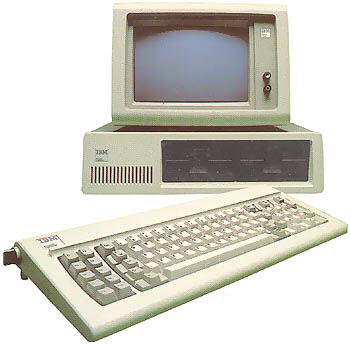|
RAAF Radschool Association Magazine - Vol 19
November 2007 Page 6 |
||
 Basic hits 40 Four decades ago, on the 1st May, 1964, two Dartmouth (US) College professors (John Kemeny and Thomas Kurtz ) made computing history. They ran two simple Basic programs on two separate teletype terminals located in the basement of “College Hall”. They were the authors of Basic, which went on to be the most widely used computer language in the world. Basic was originally an acronym for Beginners' All-purpose Symbolic Instruction Code. Kurtz explained. "The development of Basic was a natural step in a whole progression of computer activities that began around 1956. The whole thrust was to try to make computing easier for people, particularly non-science and non-engineering people." They needed a simple language, and that's how Basic got developed. Instead of using things like 'log in' and 'log out,' they used simple English-language functions like 'hello' and 'goodbye.' The languages that were around in those days were just not suitable, so they developed one from scratch, with the aim being that people could use it without having to “take a course." When it was introduced, Basic was a compiled language program that used common-sense commands like LIST, SAVE, RUN, END and PRINT. Companies that started making personal computers decided they would have to have a version of Basic on their machines because it was a relatively small language, there weren't a lot of extra features on it, and it got millions of people around the world involved in computing. While the original Basic may no longer be in widespread use, Visual Basic remains a popular programming platform. But with the introduction of new technologies, as well as new languages, PCs, spreadsheets, word processing applications and the like, the original Basic is now used only in isolated locations. IBM
In 1981, IBM came out with the IBM Personal Computer. Before this, Apple
and Radio Shack were the dominant PC companies. At the time, IBM was a
giant, conservative corporation who sold giant computers to other giant,
conservative corporations. When IBM released the PC, it made the PC a
legitimate piece of office equipment, as opposed to the "hobbyist items"
that the other PC makers sold. At least that was a common impression in
the corporate world. The IBM PC sold really well, even though other PC makers offered better price-performance. Then people started selling (and buying) IBM PC clones, compatible with the IBM PC but a lot cheaper. Sometimes they were about half the price of a "true IBM PC." The IBM compatibles eventually took over the majority of the personal computer market. Even today, I can run most application software written for a 1981 IBM PC on my Pentium 4 Windows XP system. IBM has been making personal computers ever since. But all things come to an end. IBM is selling its Personal Computer division to China's Lenovo Group for the low, low price of US$1,750,000,000. http://news.com.com/2100-1042_3-5482284.html. In 1994 (and maybe later, I don't remember), it was against U.S. law to export most personal computers to China. Ten years later, IBM, the creator of the "PC as we know it," is selling its entire PC business to China. Things change. It's also notable that in 1981, the U.S. trade deficit with China was almost zero. Last year, China exported $124 billion more to the U.S. than it imported. This year China surpassed passed the U.S. as the world's largest exporter to Australia. Lexmark In 1991, IBM decided to get rid of their printer division, and they spun off Lexmark. Actually, they decided to do it earlier, but it took a few years of preparation. The name Lexmark probably comes from Lexington, Kentucky, where IBM made printers for a lot of years. In 1996, Lexmark moved its headquarters from Greenwich, CT to Lexington, Kentucky where most of its employees were. In 2004, some people accused printer maker Lexmark of Spyware. If you’ve bought a Lexmark printer, and installed the driver, you have also probably installed Spyware on your machine. Lexmark defends this by saying "It's not spyware because it's disclosed in the 'I agree' page” (that nobody reads). Unless instructed otherwise, the Lexmark printer driver installation will load software to send your printing stats to Lexmark, info such as pages printed, ink used, etc. After initially denying the allegations, Lexmark acknowledged installing tracking software that reported printer and cartridge use back to the company for survey purposes. Lexmark claimed that no personal data is taken by the program, and that it is impossible to identify anyone by it. However, users installing the software are prompted to fill in a registration form including their name and the serial number of the product. Privacy fans don't like this because Lexmark can associate the data received from individual users with the serial number in the product registration. This ‘reporting in’ also slows down your computer.
|
